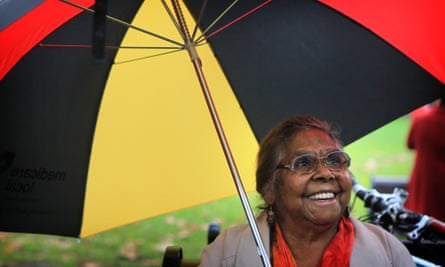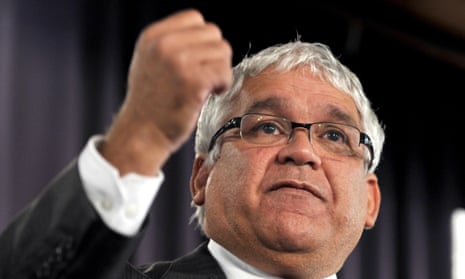To an outsider, Indigenous affairs must look like a strange, logic-free zone right now.
Over the past year we’ve seen the threat of remote community closures in Western Australia, the whole of portfolio Indigenous Advancement Strategy (IAS) tendering process rolled out, attempts to weaken protection from racial vilification under the Racial Discrimination Act, significant federal budget cuts to Indigenous affairs, and a number of ill-considered comments from the prime minister that caused great offence to many Aboriginal and Torres Strait Islander people.
Just last week there were 90 protests held around the country against the closure of Aboriginal communities in WA, and we’ve seen real consternation and anxiety over the IAS in the past month.
It’s hard to see the last year in Indigenous affairs as anything but one of significant rupture in the relationship between Aboriginal and Torres Strait Islander people and the federal government. Of course, contention and controversy in this area isn’t something that’s new, but the nature of the change has taken some by surprise.
With the federal budget upon us, and National reconciliation week just around the corner, it’s worth taking stock of the space Indigenous affairs currently has in the life of the nation and what that means for non-Indigenous Australians.
Aboriginal and Torres Strait Islander social justice commissioner Mick Gooda, in his 2014 social justice report, referred to the deep funding cuts and uncertainty about government plans as creating one of the largest scale upheavals in Aboriginal and Torres Strait Islander affairs.
Such upheaval is always likely to be met with anxiety, and widespread concern at the potential impact of the change. It is made so much worse by an absence of any real or robust engagement about the changes prior to them being developed and announced. And that has been the case with the IAS and the budget cuts.
In fact, almost 12 months before the roll out of the IAS and six months before last year’s budget, the national Indigenous representative body National Congress of Australia’s First Peoples was informed that they would no longer receive funding from the government. This signaled to many an unwillingness to engage widely and to undermine structures that would facilitate effective consultation nationally.
The absence of real engagement results in top-down approaches that are not developed or tested with Aboriginal and Torres Strait Islander people, and has long been acknowledged by governments of all persuasions as the key to failure in Indigenous affairs.
In recognition of this, Abbott announced a new era of engagement in Indigenous affairs when he came to power. But if the approaches and reaction of the past year are anything to go by, the government has fallen well short of such a laudable proclamation.
It’s confounding to many Aboriginal people as to why engagement hasn’t followed such public pronouncements. It’s been the central call of Aboriginal and Torres Strait Islander people for decades, and the one that is the constant failure of government.
Assuming there is a genuine government desire to get things right, the failure to engage highlights the relative lack of political power of Aboriginal people. At just under 3% of the population, Aboriginal and Torres Strait Islander people are exposed to having their interests sidelined when the harder political calculations are made. That is, governments may start with noble goals in mind but are tempted to sweep them to the side when weighing the opportunity cost or reaction of other constituencies with more political power.
But there are examples where this imbalance has been overcome by building understanding and support from non-Indigenous Australians.
Perhaps the biggest show of such support was the more than 90.77% of Australians who voted yes to amend the constitution to include Aboriginal and Torres Strait Islander people in the census and allow the Commonwealth to create laws for them in the 1967 referendum. This was a moment when a majority of Australians saw a change in the founding document to assist Indigenous people as something that would improve the country as a whole.
In the 1990s we saw groups springing up around the country in support of reconciliation and they continue their work today. In 2000, there was the Walk for Reconciliation across Sydney Harbour Bridge, where some 250,000 Australians showed their support and more than 300,000 Australians signed a hand and planted it in ANTaR’s Sea of Hands installations around the country.

The Close the Gap Campaign for health equality has had more than 200,000 people show their support, and the movement for constitutional recognition that has garnered more than 240,000 Australians in support of change.
These are significant numbers and have in some instances resulted in real change, whether it was the successful referendum, bipartisan nation-wide commitments to close the health equality gap, or the delivery of a long overdue apology to the stolen generations.
And we’ve seen the power of solidarity in more recent times. Some of the worst decisions of the 2014 federal budget – the defunding of Aboriginal and Torres Strait Islander legal Sservices and Aboriginal family violence prevention services – were turned around by a concerted effort by those Aboriginal sectors, supported by non-Indigenous Australians writing letters to ministers, signing petitions, and publicly commenting on the issue.
It is this goodwill, harnessed in solidarity with Aboriginal and Torres Strait Islander people, that could go some of the way towards levelling the power imbalance between the government and Indigenous people. There’s reason to believe that a widespread desire on the part of the broader community to support a better deal for the First Australians has existed for a while.
The last Reconciliation Barometer found widespread understanding of the levels of disadvantage experienced by Aboriginal people. More than half of non-Indigenous Australians want to engage more with Aboriginal people, 80% place an importance on learning more about Aboriginal culture and history, and a third want to do something about this disadvantage.
While support might be there, people of goodwill in the wider community must be wary of thinking they can “fix the problem”. In the recent IAS tender round, less than 50% of successful applicants were Aboriginal organisations. A surprising outcome given that such organisations are connected and accountable to their communities, culturally safe, and know what’s needed. If you’re genuine about engagement with Aboriginal and Torres Strait Islander people, these organisations is where you look.
The majority of successful organisations were larger mainstream NGOs, corporate organisations, and government departments. They will need to understand engagement, partnership, and working in solidarity with Aboriginal and Torres Strait Islander people if they don’t want to repeat the failures of government.
With the dismay of many at what’s happening in Indigenous affairs and where it is going, it is time to build a broader based movement of non-Indigenous Australians supporting Aboriginal rights and reconciliation. A movement not limited to one issue but focused on a sustained, ongoing engagement, education and mobilisation that might start to turn the tables on the relative lack of political power of Aboriginal and Torres Strait Islander people.
Such a movement could help limit the type of upheaval and rupture we’ve seen in the past year, by amplifying Aboriginal and Torres Strait Islander voices. It would be based on respect for history and culture, as well as an understanding that many of these issues have been fought for by Aboriginal people for decades. It would be a movement in support of, and in solidarity with, the First Australians. It could harness the spirit of the Bridge Walk, Sea of Hands, Close the Gap and the type of goodwill seen in the 1967 referendum.
In a practical way, placing Indigenous voices back into the middle of the discussions on Indigenous policy would create an environment in which to provide better outcomes, particularly if that engagement can be undertaken at a regional level.
As Tanya Hosch said in her 2013 Press Club speech, “There comes a time, in the life of every nation, when it must put right the injustices of the past. A time to say ‘no more’ to exclusion and prejudice. A time for us to be our better selves.”
That time is now. Australians of goodwill can join and take action with organisations like ANTaR – write to Ministers on issues such as incarceration, community closures, or impact of the Federal Budget, or like and share information on social media. All of us should attend a National Reconciliation Week event and learn more in a sustained engagement with Indigenous affairs, and be a part of the generation that bridges the gap in understanding and respect.
The road to justice and reconciliation for Aboriginal people is littered with set-backs, resilience and regrouping. With National Reconciliation Week around the corner and the budget being delivered next week, perhaps it’s time to truly place Indigenous affairs at the centre of the government and our national life. Sustained, broad based support for Aboriginal people from non-Indigenous Australians could help achieve this.
